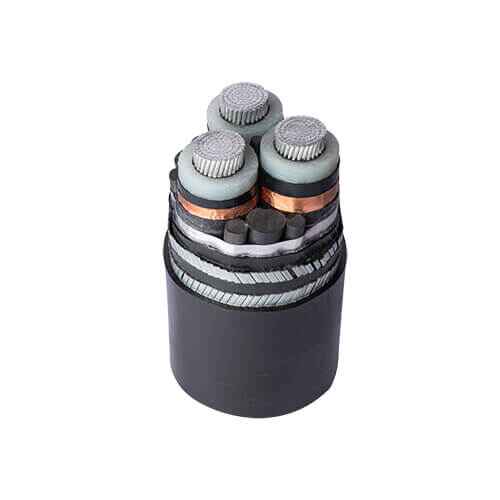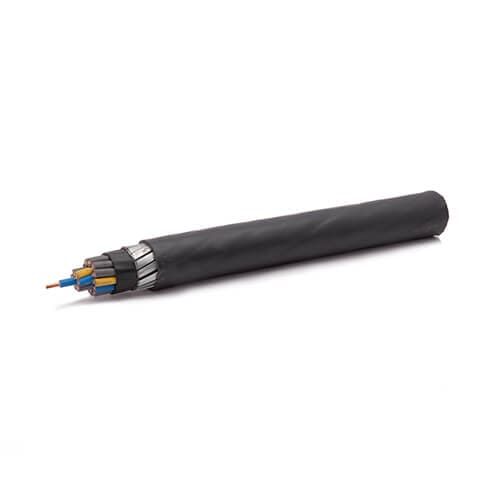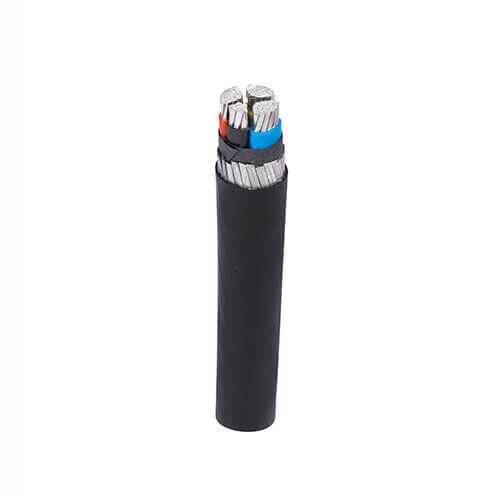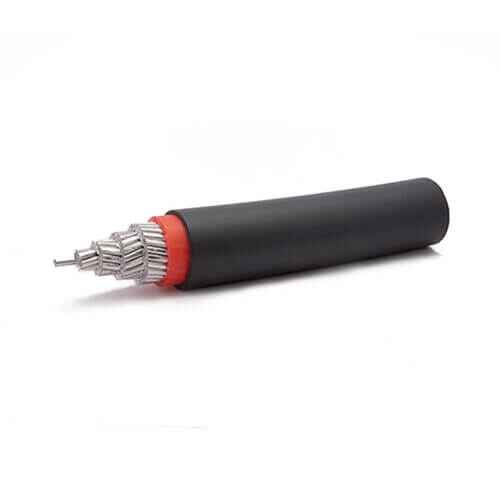XLPE is an abbreviation of cross-linked polyethylene. This has been recognized world-wide as excellent dielectric material for wires and cables. It first went into commercial production in the 1960. Polyethylene, which is a thermoplastic material converted into a thermosetting material by a process of crosslinking. The linear chain structure of polyethylene is changing into three-dimensional network structure. By this change, polyethylene, which has outstanding dielectric properties, is made resistant to extreme temperatures.
- An ISO 9001:2015, 14001:2015 & 45001:2018 Company
66 KV HV Power Cable

66 KV High Voltage Power Cable
- High Continuous Current Ratings: Higher continuous operating temperature 90-C for conductor permits XLPE Cables to carry higher current than PVC or paper insulated cables.
- Low Deformation at high temperature: Under combined heat and mechanical pressure XLPE suffers less deformation compared to other solid dielectrics.
- High Short circuit ratings: Maximum allowable continuous temperature during short circuit for XLPE insulated cables is 250-C, which increases the short circuit rating of XLPE cables drastically compared to PVC & paper Insulated cables.
- Low dielectric Loss: The dielectric losses of XLPE is much below the conventional solid dielectrics like PVC & EPR. This results in considerable saving in costs when power transmission at higher voltages is done through XLPE Cables.
- High Emergency over load capacity: XLPE Cables can be operated at 130 C during emergency. This should not exceed 100 Hours in any 12 Consecutive months and 500 hours during the lifetime of the cable.
- Low Charging currents: The charging currents are considerably lower than other dielectrics. This permits close setting of protection relays. The high resistance to heat deformation and ageing in hot air provide an important advantage in cable rating and is of special significance at locations where the ambient temperature is high. These along with better resistance to environment stress cracking and a low dielectric constant, make XLPE cables particularly suitable for high voltage and extra high voltage applications.
Popular Product







 English
English


 C701, Tower-C, Noida One
C701, Tower-C, Noida One
